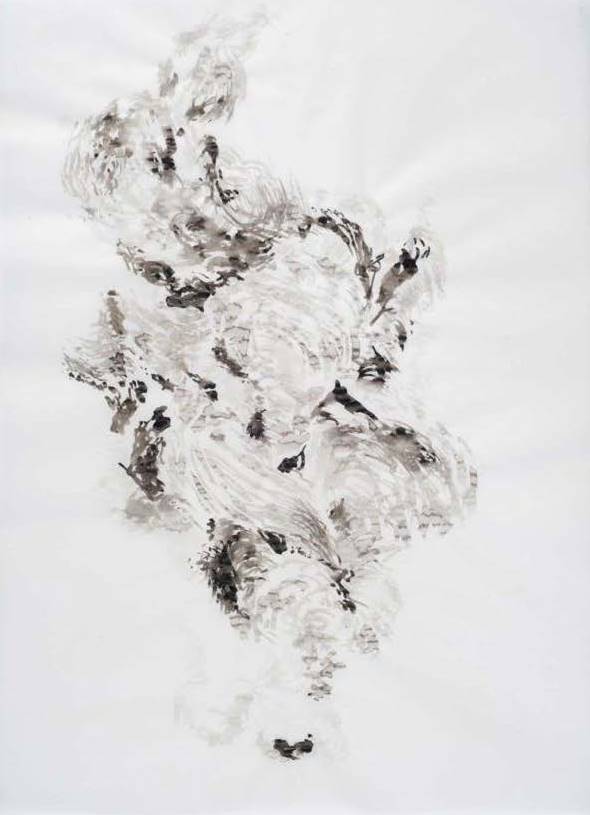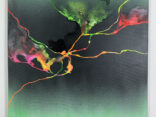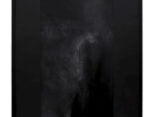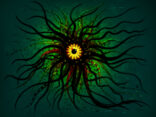Autore
Indice
- Introduction
- The pragmatic maxim: James’s misinterpretation
- Peirce’s reformulation of the pragmatic maxim
- The reformulation of the pragmatic maxim: Misak’s opinion
- Conclusion
↓ download pdf
S&F_n. 24_2020
Abstract
Charles S. Pierce’s Pragmatic Maxim. Some epistemological issues
In this paper, my aims to think over Misak’s opinion on Peirce’s pragmatic maxim. Firstly, I introduce the 1878 formulation of the pragmatic maxim in order to show its verificationist character. Secondly, I present the 1905 expression of the pragmatic maxim so as to exhibit its non-empiricist nature. Thirdly, I argue that Misak barks up the wrong tree deeming that the second formulation of the pragmatic maxim is so weak that it cannot balance the detriments of the verificationist formulation. Finally, I claim that the 1905 expression of the pragmatic maxim is neither so loose that it is useless nor so strict that it rules out meaningful statements.
-
Introduction
Widely known among philosophers and scholars as one of the most important logicians and epistemologists in the long-lasting history of Western thought, Charles S. Peirce can also be considered the founding father of pragmatism[1]. What is the central core of this innovative philosophical movement? It is that there is a connection between knowing the meaning of a hypothesis and knowing what experiential consequences to expect if the hypothesis is true. Therefore, it reflects badly on the content of a hypothesis if no consequences can be derived from it. The most serious obstacle that any such approach has to deal with is how to establish a criterion which is not unreasonably harsh. As Misak puts it, «if a criterion requires that hypotheses be connected to sensory experience, it runs the risk of ruling that only hypotheses which are explicitly about observations are legitimate»[2].
Peirce struggled against this issue. But in Misak’s opinion, he failed to strike a balance between an extreme empiricist criterion and a weaker one. More precisely, Misak thinks that Peirce was left with a criterion so feeble that every hypothesis meets the standard. On the contrary, I believe that Misak misses the point. The thesis that I will try to support in this paper is the following: the second formulation of the pragmatic maxim introduced by Peirce in 1905 is a criterion such as to avoid both the extremes of a deleterious empiricism and a perilous laxity.
- The pragmatic maxim: James’s misinterpretation
Peirce shares the aim of the logical empiricists, namely that of formulating a criterion that would determine which hypotheses are spurious and which are legitimate. His first formulation of such a criterion dates back to the 1870s and seems to be a prototype of the verifiability criterion. But how did Peirce come to that? Let us retrace the steps of his path.
In the 1878 renowned article How to Make Our Ideas Clear, Peirce declared a profound dissatisfaction with the traditional rationalistic method of clarifying concepts. According to this method, ideas must be clear and distinct[3]. In a word, a clear idea is defined as one which is so apprehended that it will be surely recognized wherever it is met with, and so that no other will be mistaken for it. As can be seen, the concept of clearness becomes that of familiarity. But never to fail to recognize an idea would indeed imply such brightness of intellect as is seldom met with in this world. On the other hand, «merely to have such an acquaintance with the idea as to have become familiar with it, and to have lost all hesitancy in recognizing it in ordinary cases, hardly seems to deserve the name of clearness of apprehension»[4], since it only amounts to a subjective feeling of control. For this reason, logicians started thinking that the concept of clearness needed to be supplemented by another one, specifically that of distinctness. A distinct idea is defined as one which is clear to the highest degree, that is to say that it does not contain nothing which is not clear. When an idea is distinctly apprehended, we can give a precise definition of it in abstract terms. Unfortunately, nothing new can ever be learned effectively by analyzing definitions. Our beliefs can only be set in order by this process[5], while Peirce’s yearning is that of «connecting logic with experimental investigation, that certainly being the main task of thought»[6]. Nevertheless, Peirce does not deny that clearness and distinctness are useful steps to clarify concepts; he just wants to point out that they are not enough to achieve this goal. To put it otherwise, the author needs to find a sufficient condition of clearness.
For this purpose, Peirce introduces both the concept of doubt and that of belief[7]. There are three points of difference between these two concepts. First, we generally know when we want to ask a question and when we want to pronounce a judgment because the sensation of doubting is different from that of believing. Second, doubt is a dissatisfied state from which we struggle to free ourselves and pass into the state of belief, while belief is a satisfactory state that we do not want to avoid. Third, our beliefs guide our desires and shape our actions, while doubt has never such an effect. To exhibit this practical difference, Peirce gives the following example:
The Assassins, or followers of the Old Man of the Mountain, used to rush into death at his least command, because they believed that obedience to him would insure everlasting felicity. Had they doubted this, they would not have acted as they did. So it is with every belief, according to its degree. The feeling of believing is a more or less sure indication of there being established in our nature some habit which will determine our actions[8].
From this perspective, the irritation of doubt causes a struggle to attain a state of belief; indeed, thought in action has for its only possible motive the attainment of thought at rest. But its being rested lasts just a moment because belief involves the establishment in our nature of a rule of action, and the application of such a rule leads to further doubts. As Peirce puts it, «at the same time that [belief] is a stopping-place, it is also a new starting-place for thought»[9]. At this point, if the essence of belief is the establishment of a rule of action or a habit, therefore different beliefs are distinguished by the different modes of action to which they give rise. In other words, if two beliefs appease the same doubt producing the same rule of action, then these two beliefs are not different at all. Thus, Peirce finds the third condition of clearness he was searching for; in order to develop the meaning of any concept, we have simply to determine what habits it produces, for what a concept means is simply what habits it involves.
To see what the above-mentioned principle leads to, Peirce considers the Catholic doctrine of transubstantiation in the light of it. According to this doctrine, the elements of the sacrament are literally fresh and blood; they nourish our souls as meat would our bodies. However, they possess all the sensible qualities of wafer-cakes and diluted wine, and we can have no conception of wine expect what may enter into the following beliefs: that this, that, or the others, is wine, and wine possess certain properties. As Peirce states, «such beliefs are nothing but self-notifications that we should, upon occasion, act in regard to such things as we believe to be wine according to the qualities which we believe wine to possess»[10]. In wider terms, what Peirce wants to point out is how impossible is to have an idea which relates to anything but conceived sensible effects of concepts; indeed, our idea of anything is our idea of its sensible effects. So the rule for attaining the third grade of clearness of apprehension is as follows:
Consider what effects, which might conceivably have practical bearings, we conceive the object of our conception to have. Then, our conception of these effects is the whole of our conception of the object[11].
This rule is known as the pragmatic maxim. By this maxim, Peirce suggests that knowing the meaning of an expression is exhausted by its practical effects, characterized here as direct or indirect effects upon our senses. To put it otherwise, Peirce has come down to what is tangible and practical as the root of every real distinction of thought. But what is the real nature of the connection between concepts and their practical effects? In this regard, Peirce declares what follows:
Pragmatism is the principle that every theoretical judgment expressible in a sentence in the indicative mood is a confused form of thought whose only meaning, if it has any, lies in its tendency to enforce a corresponding practical maxim expressible as a conditional sentence having its apodosis in the imperative mood[12].
The concept of water can serve as an example of this recommendation[13]. In fact, the concept of water can be clarified through a series of conditional statements such as:
1) If you were to put some water in the freezer (protasis), you would expect it to freeze when it reaches 0 degrees Celsius (apodosis).
2) If you were to put some water on the fire (protasis), you would expect it to boil when it reaches 100 degrees Celsius (apodosis).
As can be seen, the apodosis expresses precisely the sensible effects of our action on the object defined by the concept of water. In short, the pragmatic maxim clarifies the meaning of concepts by conditionals of the following sort: “if you were to do X, you would expect to observe Y”.
Therefore, Peirce must have been highly taken aback when he came to find out James’s interpretation of the pragmatic maxim; indeed, such an interpretation was extremely distant from Peirce’s aim, as we can notice dwelling on the following passage:
Yet in one case scholasticism has proved the importance of the substance-idea by treating it pragmatically. I refer to certain disputes about the mystery of the Eucharist. Substance here would appear to have momentous pragmatic value. Since the accidents of the wafer don't change in the Lord's supper, and yet it has become the very body of Christ, it must be that the change is in the substance solely. The bread-substance must have been withdrawn, and the divine substance substituted miraculously without altering the immediate sensible properties. But tho these don't alter, a tremendous difference has been made, no less a one than this, that we who take the sacrament, now feed upon the very substance of divinity. The substance-notion breaks into life, then, with tremendous effect, if once you allow that substances can separate from their accidents, and exchange these latter[14].
Quite surprisingly, James twists Peirce’s pragmatic maxim because he extends the field of application of the peircean «conceived sensible effects» to a psychological dimension. In a word, by stressing the practical difference that a conception makes to you and me, James does nothing but try to reconcile pragmatism with metaphysics. This way, James’s objection to metaphysics is really more moderate in comparison with Peirce’s. As Barrotta puts it, «James’s way of conceiving pragmatism makes it something like a useful tool to distinguish the materialistic metaphysics from the spiritualistic one»[15]. But James’s radical theoretical overturning misunderstands Peirce’s pragmatism in two ways. First, it reneges the deep meaning of Peirce’s thought, whose purpose was to transfer the experimentalist attitude of scientists to philosophy. About this, Peirce writes:
You will find that whatever assertion you may make to [the typical experimentalist], he will either understand as meaning that if a given prescription for an experiment ever can be and ever is carried out in act, an experience of a given description will result, or else he will see no sense at all in what you say[16].
As shown by this passage, Peirce thinks that pragmatism represents the philosophical attitude which is typical of laboratory work. Second, James’s point of view disavows the literal meaning of pragmatism as well. What does this mean? According to Peirce, the pragmatic maxim is nothing but a criterion by way of we can analyse the meaning of concepts, while on James’s view it is more than that. Let us take the concept of God as an example. Being God omniscient, ubiquitous and so forth, in Peirce’s opinion we cannot consider what effects, which might conceivably have practical bearings, we conceive God to have; therefore, the concept of God has no pragmatic meaning. Quite the opposite, James argues that the concept of God retains a precise pragmatic meaning because it is fundamental to understand the spiritual character of life. After having perceived how the notion of pragmatism had been used after his original coinage of the term, Peirce started seeking out a new name for his pragmatism. At last, in order to distinguish it from James’s view, he began to call his doctrine “pragmaticism”. In this regard, Peirce writes:
[At] present, the word [pragmatism] begins to be met with occasionally in the literary journals, where it gets abused in the merciless way that words have to expect when they fall into literary clutches. […] So then, the writer, finding his bantling “pragmatism” so promoted, feels that it is time to kiss his child good-by and relinquish it to its higher destiny; while to serve the precise purpose of expressing the original definition, he begs to announce the birth of the word “pragmaticism”, which is ugly enough to be safe from kidnappers[17].
- Peirce’s reformulation of the pragmatic maxim
In the 1878 above-mentioned article How to Make Our Ideas Clear, as an example of how the pragmatic maxim operates Peirce examines the meaning of the following hypothesis: “this diamond is hard”. If the diamond is hard, it means that if you try to scratch it, you will find out that it will not be scratched at all. Then Peirce goes on saying that the whole conception of the quality of hardness lies in its conceived effects so that there is absolutely no difference between a hard thing and a soft thing as long as they are not brought to the test. As he puts it:
Suppose, then, that a diamond could be crystallized in the midst of a cushion of soft cotton, and should remain there until it was finally burned up. Would it be false to say that that diamond was soft? This seems a foolish question, and would be so, in fact, except in the realm of logic. […] We may, in the present case, modify our question, and ask what prevents us from saying that all hard bodies remain perfectly soft until they are touched, when their hardness increases with the pressure until they are scratched. Reflection will show that the reply is this: there would be no falsity in such modes of speech. They would involve a modification of our present usage of speech with regard to the words hard and soft, but not of their meanings. For they represent no fact to be different from what it is; only they involve arrangements of facts which would be exceedingly maladroit[18].
In this example, what Peirce asks himself is whether the diamond is hard or not. His answer is as follows; it does not make any sense to ask such a question since no one has ever touched or tried to scratch the diamond. In other words, the consequence of the hypothesis “the diamond is hard” is formulated as an indicative conditional. But if we are to formulate consequences in this manner, it makes little sense to describe a diamond which is never scratched as being hard. In a word, there is no difference between a hard thing and a pliable one until they are tested. In summary, Peirce suggests that understanding is exhausted precisely by knowing the empirical, observable consequences of the hypothesis in question; hence the whole meaning of such a hypothesis is the set of empirical, observable consequence that can be derived from it. In this respect, it is clear-cut why Ayer says that Peirce’s pragmatism allows no truck with metaphysics, «its standpoint being very closely akin to that which was later to be adopted by the logical positivist»[19]. What Ayer seems to suggest here is that Peirce’s pragmatic maxim is identical with the physicalist interpretation of the verification principle, according to which the meaning of a concept is clarified only by means of perceivable experiences.
But such a verificationist interpretation of the pragmatic maxim is nothing but exceedingly limiting[20]. Indeed, no more being content with the conclusions reached in How to Make Our Ideas Clear, Peirce changes his mind in the 1905 famous article Issues of Pragmaticism; there he admits that he had wavered his own mind suggesting that habits and dispositions are not real. Now, he claims that the consequences concerning pragmatism are those which would occur under certain conditions and not those which will actually occur. As Misak puts it, «[Peirce] is adamant that the “will-be” in [the 1878] paper be replaced with a “would-be”»[21]. In this way, Peirce adopts a realism about dispositions and subjunctive conditionals, being a disposition more than the total of its realizations, and being a subjunctive conditional determinately correct or incorrect. What does all this mean considering the above-mentioned example of the untouched diamond? In 1905, Peirce’s view is that it is a real fact that the untouched diamond would resist pressure, because the behaviour of diamonds is governed by laws and laws sustain subjunctive and counterfactual conditions. To put it otherwise, the pragmatic meaning of “this diamond is hard” is now the following: if you were to scratch it, it would resist[22]. Such a conditional is determinedly correct or incorrect whether or not the antecedent is fulfilled. As Peirce puts it:
Let us now take up the case of that diamond which […] [was not] subjected to any other pressure than that of the atmosphere and its own weight. The question is, was that diamond really hard? It is certain that no discernible actual fact determined it to be so. But is its hardness not, nevertheless, a real fact? To say, as the article of January 1878 seems to intend, that it is just as an arbitrary “usage of speech” chooses to arrange its thoughts, is as much as to decide against the reality of the property, since the real is that which is such as it is regardless of how it is, at any time, thought to be. […] Being a diamond, it was a mass of pure carbon, in the form of a more or less transparent crystal (brittle, and of facile octahedral cleavage, unless it was of an unheard-of variety), which, if not trimmed after one of the fashions in which diamonds may be trimmed, took the shape of an octahedron, apparently regular [...], with grooved edges, and probably with some curved faces. Without being subjected to any considerable pressure, it could be found to be insoluble, very highly refractive, showing under radium rays (and perhaps under “dark light” and X-rays) a peculiar bluish phosphorescence, having as high a specific gravity as realgar or orpiment, and giving off during its combustion less heat than any other form of carbon would have done. From some of these properties hardness is believed to be inseparable. For like it they bespeak the high polemerization of the molecule. But however this may be, how can the hardness of all other diamonds fail to bespeak some real relation among the diamonds without which a piece of carbon would not be a diamond? Is it not a monstrous perversion of the word and concept real to say that the accident of the non-arrival of the corundum prevented the hardness of the diamond from having the reality which it otherwise, with little doubt, would have had?[23]
As shown by this passage, Peirce strongly denies that the untouched diamond can be considered a pliable thing. Even if the diamond has never been subjected to any considerable pressure, it could be found to have properties (e.g. insoluble, refractive, showing a bluish phosphorescence under radium rays etc.) from which the quality of hardness is believed to be inseparable. In other words, «the quality of hardness could have been proved through many […] experimental conditions»[24], not just by subjecting the diamond to the pressure of a hand. Consequently, Peirce reformulates the pragmatic maxim in order to avoid the problems arising from the original verificationist formulation. In 1905 we find him offering the following version of the pragmatic maxim:
The entire intellectual purport of any symbol consists in the total of all general modes of rational conduct which, conditionally upon all the possible different circumstances and desires, would ensue upon the acceptance of the symbol[25].
This construal of pragmatic meaning is strikingly different from Peirce’s verificationist formulation of the pragmatic maxim. In this non-verificationist construal, pragmatism is no more concerned with perceivable effects upon our senses; the emphasis is not on them but on modes of rational conduct. In other words:
the pragmatic maxim concerns the procedures of scientific research, whose purpose is that of solving problems. Beliefs save us from annoying doubts establishing rational habits. In order to attain such beliefs an experimental investigation is certainly required, but this is far from saying that our beliefs must be totally reduced to perceivable experiences[26].
As Peirce puts it:
For if the reader will turn to the original maxim of pragmaticism […], he will see that the question is, not what did happen, but whether it would have been well to engage in any line of conduct whose successful issue depended upon whether that diamond would resist an attempt to scratch it, or whether all other logical means of determining how it ought to be classed would lead to the conclusion which […] would be the belief which alone could be the result of investigation carried sufficiently far[27].
- The reformulation of the pragmatic maxim: Misak’s opinion
In her book Truth and the End of Inquiry. A Peircean Account of Truth, Cheryl Misak states that Peirce shares the purpose of logical empiricists to formulate a criterion that would determine which hypotheses are spurious and which are legitimate. In general, the logical empiricists say that if a sentence is meaningful, there must be some experience that would verify or falsify it. It means that sentences which fail to meet the standard are deemed to be meaningless and neither true nor false[28]. For his part, what Peirce wants is to formulate a pragmatic criterion to be used as a standard for determining which expressions are gibberish, being pragmatism a method for clarifying ideas so that they are not subject to metaphysical deceptions.
Peirce’s 1878 formulation of this criterion, the so-called pragmatic maxim, requires that hypotheses are to be connected to sensory experience; thus, Peirce rules that only hypotheses which are explicitly about observations and perceptions meet the standard. In a word, understanding is exhausted by knowing the perceivable consequences of a hypothesis. But as shown by the example of the untouched diamond, this verificationist interpretation of the pragmatic maxim is so strict that it rules out statements which seem to be perfectly well understood; indeed, to describe a diamond which has never been scratched as being hard is nothing but the truth because it could be found to have hardness-properties even if it is not subjected to hand pressure. Misak agrees about the 1878 pragmatic maxim as being too strict to be actually functional.
In 1905 we find Peirce offering another version of the pragmatic maxim. That is, «practical consequences seem no longer to be effects, direct or indirect, upon our senses; they are rather consequences for action or thought»[29]. In Misak’s opinion, the rational conduct which the pragmatic maxim is about includes both the interpreter’s disposition to behave and the conduct of one’s thought. To put it otherwise, Misak thinks that such a characterization of pragmatism involves the effects that the acceptance of a hypothesis would have on an interpreter’s train of thought. So the pragmatic meaning is not associated with the actual, observable, and perceivable effects of a symbol, but with the effects that would be produced if the symbol itself were properly understood. Therefore, Misak seems to hold that the pragmatic maxim becomes quite uninteresting:
If all that is required of pragmatically meaningful hypotheses is that they should, if believed, make some difference to how the believer thinks or acts, then everything will make the grade. Suppose that Russell’s hypothesis is the sort that pragmatism is set against: “the world and everything in it, including memories and fossils, was created five minutes ago”. Defenders of the hypothesis may argue against its opponents, they may use the hypothesis as a premise in arguments, or they may found a lively religion, paying homage to the powerful god who recently created the world[30].
These effects, Misak says, must surely count as effects on the train of thought and behaviour of interpreters. Therefore, contrary to the 1878 version, the second formulation of the pragmatic maxim is too weak to do any work at all; it does nothing but make hypotheses meet the standard whatever their character is. It seems that any hypothesis can make a non-empirical practical difference, be that a difference in some interpreter’s train of thought, in internal experience, or in theoretical contexts. In a word, the 1905 version of the pragmatic maxim gets rid of its original verificationist essence at the price of becoming worthless and lax. In summary, Misak seems to mean, Peirce’s adoption of the term “pragmaticism” to avoid James’s explanation of the pragmatic maxim would be quite ironically pointless; indeed, even James’s concept of Eucharist would be pragmatically legitimate.
But I do not think that Peirce was as naïve as Misak’s point of view would suggest. Let us take the following statement as an example:
But what is to prevent [the pragmatist’s] opponent from replying that there is a practical difference which consists in his recognizing one as his conception and not the other? That is, one is expressible in a way in which the other is not expressible. Pragmatism is completely volatilized if you admit that sort of practicality[31].
In brief, Peirce suggestion is that a practical consequence cannot be a mere difference in the meaning of words. As also shown by the 1905 example of the untouched diamond, pragmatism requires legitimate hypotheses to have practical considerations, considerations which have it that certain lines of conduct will entail certain kinds of experimental experiences. When Misak says that Peirce has not arrived at a principled way to identify spurious hypotheses, I claim that she does not notice the experimental dimension which is implicit in the 1905 version of the pragmatic maxim. To put it otherwise, the general modes of rational conduct which the second version of the pragmatic maxim is about do nothing but imply an experimental context. In one word, the second pragmatic criterion Peirce gives is neither too strict nor too weak; it efficaciously avoids both a deleterious empiricism and a perilous laxity.
- Conclusion
It is useful to recapitulate what has been said up to now. First, I have shown that the pragmatic maxim is the rule to attain the third grade of clearness of apprehension that Peirce was searching for. Second, I have argued that the pragmatic maxim cannot be seen as a useful tool to distinguish between incompatible kinds of metaphysics. Third, I have pointed out that Peirce reformulates the pragmatic maxim in order to avoid a strict verificationist interpretation of it. Finally, I have argued that Misak barks up the wrong tree deeming that the second formulation of the pragmatic maxim is so weak that it cannot balance the detriments of the verificationist formulation.
[1] In the 1900s, Peirce renamed his doctrine “pragmaticism” so as to distinguish his position from James’s psychological drifts. But since the new name never caught on, I will use the more likable “pragmatism”.
[2] C.J. Misak, Truth and the End of Inquiry. A Peircean Account of Truth, Oxford University Press, New York 2004, p. 3.
[3] The term “clear and distinct idea” was used by Descartes in his Meditations on First Philosophy. It basically means something that is so self-evidently true that it cannot logically be doubted. Descartes tries to build up a body of certain knowledge using clear and distinct ideas as a test: if it’s clear and distinct then it must be true.
[4] CP: Collected Papers of Charles Sanders Peirce, eds. C. Hartshorne and P. Weiss, voll. 1-6, Harvard University Press, Cambridge (MA) 1931-35; ed. A. Burks, voll. 7-8, Harvard University Press, Cambridge (MA) 1958. C.S. Peirce 1878: CP 5.389.
[5] However, Peirce does not deny that order is an essential element of intellectual economy. What the traditional rationalistic method never became aware of was that the mind can only transform knowledge, but never originate it unless it is fed with the facts of observation. See C.S. Peirce 1878: CP 5.392.
[6] P. Barrotta, La massima pragmatica e il significato dei termini scientifici, in R. Gronda (ed.), Pragmatismo e filosofia della scienza, Pisa University Press, Pisa 2017, p. 90.
[7] These two concepts are introduced by Peirce for the first time in the 1877 famous article The Fixing of Belief.
[8] CP: Collected Papers of Charles Sanders Peirce, cit., C.S. Peirce 1877: CP 5.371. That of the Assasins is a Syrian religious and military order founded in Persia in 1090 and finally subdued in Lebanon in 1272. The Holy Spirit was said to reside in the Old Man of the Mountain, whose will was followed in blind obedience.
[9] Ibid., C.S. Peirce 1878: CP 5.397.
[10] Ibid., C.S. Peirce 1878: CP 5.401.
[11] Ibid., C.S. Peirce 1878: CP 5.402. Following a philosophical tradition including both Hume and Kant, Peirce’s intention is that of formulating a criterion which can serve as a standard for determining which expressions are metaphysical rubbish. This antimetaphysical purpose is clear-cut from Peirce’s transubstantiation example. See also C.S. Peirce 1904: CP 8.191.
[12] Ibid., C.S. Peirce 1903: CP 5.18.
[13] Here I follow the example proposed by Barrotta in P. Barrotta, op. cit., p. 92.
[14] W. James, Pragmatism. A New Name for Some Old Ways of Thinking (1907), Barnes & Noble, New York 2003, pp. 38-39.
[15] P. Barrotta, op. cit., p. 94.
[16] CP: Collected Papers of Charles Sanders Peirce, cit., C.S. Peirce 1905: CP 5.411.
[17] Ibid., C.S. Peirce 1905: CP 5.414.
[18] Ibid., C.S. Peirce 1878: CP 5.403.
[19] A.J. Ayer, The Origins of Pragmatism, Macmillan, London 1968, p. 55.
[20] Even a committed empiricist like Rudolf Carnap concluded that dispositional concepts are difficult to be completely reduced to perceivable experiences.
[21] C.J. Misak, op. cit., p. 10.
[22] As Peirce now suggests, the consequences which concern pragmatism are predications of the following form: if Z is true, then if you were to do X, Y would result.
[23] CP: Collected Papers of Charles Sanders Peirce, cit., C.S. Peirce 1905: CP 5.457.
[24] P. Barrotta, op. cit., p. 96.
[25] CP: Collected Papers of Charles Sanders Peirce, cit., C.S. Peirce 1905: CP 5.438. In Peirce’s theory, icons are signs that exhibit their objects in a causal manner by virtue of similarity, indices are signs that indicate their objects in a causal manner, and symbols are word, hypotheses, or arguments that depend on a conventional or habitual rule.
[26] P. Barrotta, op. cit., p. 96.
[27] CP: Collected Papers of Charles Sanders Peirce, cit., C.S. Peirce 1905: CP 5.453.
[28] An exception is made for mathematical sentences and sentences of logic; they are meaningful because they are tautologies.
[29] C.J. Misak, op. cit., p. 18.
[30] Ibid., p. 20.
[31] CP: Collected Papers of Charles Sanders Peirce, cit., C.S. Peirce 1903: CP 5.33.








